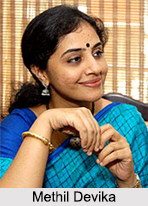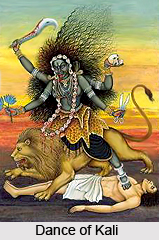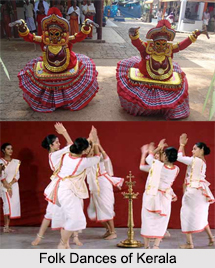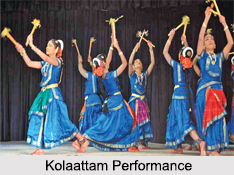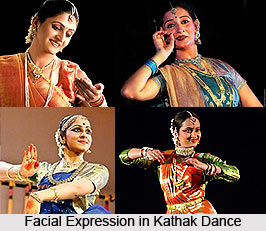 Abhinaya in Kathak has evolved out of many dance traditions which belong to Central India. The precursors of the literary content of Kathak dance are the rasadharis of Mathura and Vrindavan, the dance kirtans of Bihar and Maithili region and the dancers of Gujarat. The lyric is associated with the Vaishnavite tradition that formed the basis.
Abhinaya in Kathak has evolved out of many dance traditions which belong to Central India. The precursors of the literary content of Kathak dance are the rasadharis of Mathura and Vrindavan, the dance kirtans of Bihar and Maithili region and the dancers of Gujarat. The lyric is associated with the Vaishnavite tradition that formed the basis.
Types of Abhinaya in Kathak
The dancer presents meaning through gesture which is accompanied by a song. Abhinaya in Kathak has been divided into two broad headings the gatabhava and the abhinaya proper. The gatabhava is performed without words. The dancer makes an entry into the acting arena which is known as the gatapalta and gata nikas. Thereafter the dancer presents brief pieces based on the life of Lord Krishna and the gopis. Some small episodes are enlarged into slightly longer stories, such as the killing of the serpent Kaliya by Krishna. Sometimes these gatabhavas are also known as artha gata.
Nayikabheda is a presentation by the Kathak dancer which is closely related to the gatabhava. The Kathak dancer presents different types of nayikas through the tune of the lehara. All the eight nayikas of the Indian tradition are known to the Kathak dancer and it is presented as different gatas. These are all presentations of bhava and variations of a dominant mood.
However, the principle of sancharibhavas is seen in abhinaya proper of Kathak. The abhinaya is performed to different types of poetic and musical compositions. It is evident that abhinaya was performed by the rasadhari dancers to the singing of the dhruvapad and the prabandh. These were replaced by the hori and the Dhamar. The hori is a composition of north Indian music which is sung to the deepachandi tala. This revolves round the theme of the Holi festival. The Dhamar is performed in a mood of obeisance. The great masters of the Kathak dancer, Maharaj Bindadin and his brother Kalka had composed bhajan and padas. They were written specifically for the dance and it is clear from their wording that the writers were providing words for movements.
Thumri is the richest part of the abhinaya. The dancer interprets the word and the nuances of the word as interpreted through the vocal rendering of the thumri. The singer can present several variations and the dancer can also execute as many variations in the content. This demands greater imagination on the part of the dancer who has to represent, many analogies and images through movement. It is only through the movement of the hands, the eyes, the eyebrows that the dancer presents the entire gamut of feelings and emotions possible for a particular Sthayi bhava. The vitality of Kathak dance has not diminished as the thumri on the one hand and the tala on the other provided the dancer with solid pillars around which variations could be built in both the Nritta and the abhinaya portions.
Dadra is another musical composition which is used for abhinaya in Kathak. This has been another favourite musical composition on which interpretative dancing in Kathak has been developed. Here again, dancer is presented not as an actor, but as a narrator. In this regard there is a very close resemblance between all the styles of Indian classical dance other than Kathakali.
